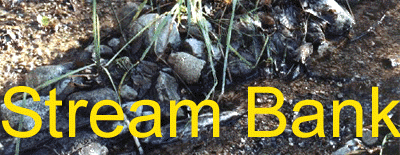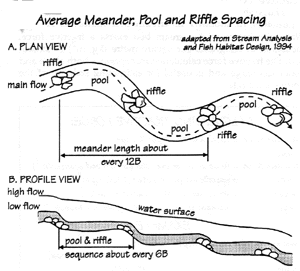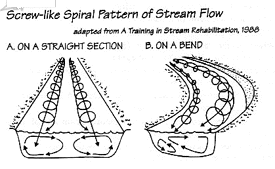

Flowing water is a powerful force. It carves out a channel, moves materials downstream, and sometimes changes course unexpectedly. The stream is in equilibrium. If one part is altered, the stream will work to regain equilibrium by altering another part. Several complex factors shape the stream channel. The most important are hydraulic force (flowing water) and debris load (e.g., rocks, wood, ice carried in water). Flowing water moves in a three-dimensional wave pattern. It makes the current snake horizontally from one side of the flood plain to another and, simultaneously, undulate vertically from the top of the water column to the bottom. The sinuous meander pattern is repeated regularly, on average every twelve times the bankfull channel width (Figure A). Also, the vertical wave pattern creates a sequence of pools and riffles (Figure B), repeated about every six times the channel width.

This flow pattern causes scouring of both the stream bed and the banks. Consequently, the stream moves a great deal of material downstream. The lighter, smaller sediment moves downstream faster than larger, heavier material.
Gradual bank erosion is a natural process that benefits stream life. It creates habitat diversity by creating pools, undercut banks, back eddies, and sloughs. It exposes tree roots and provides new sources of gravel. These features give character to the stream and provide complex habitat for the various stages in the life cycles of fish and other stream organisms.